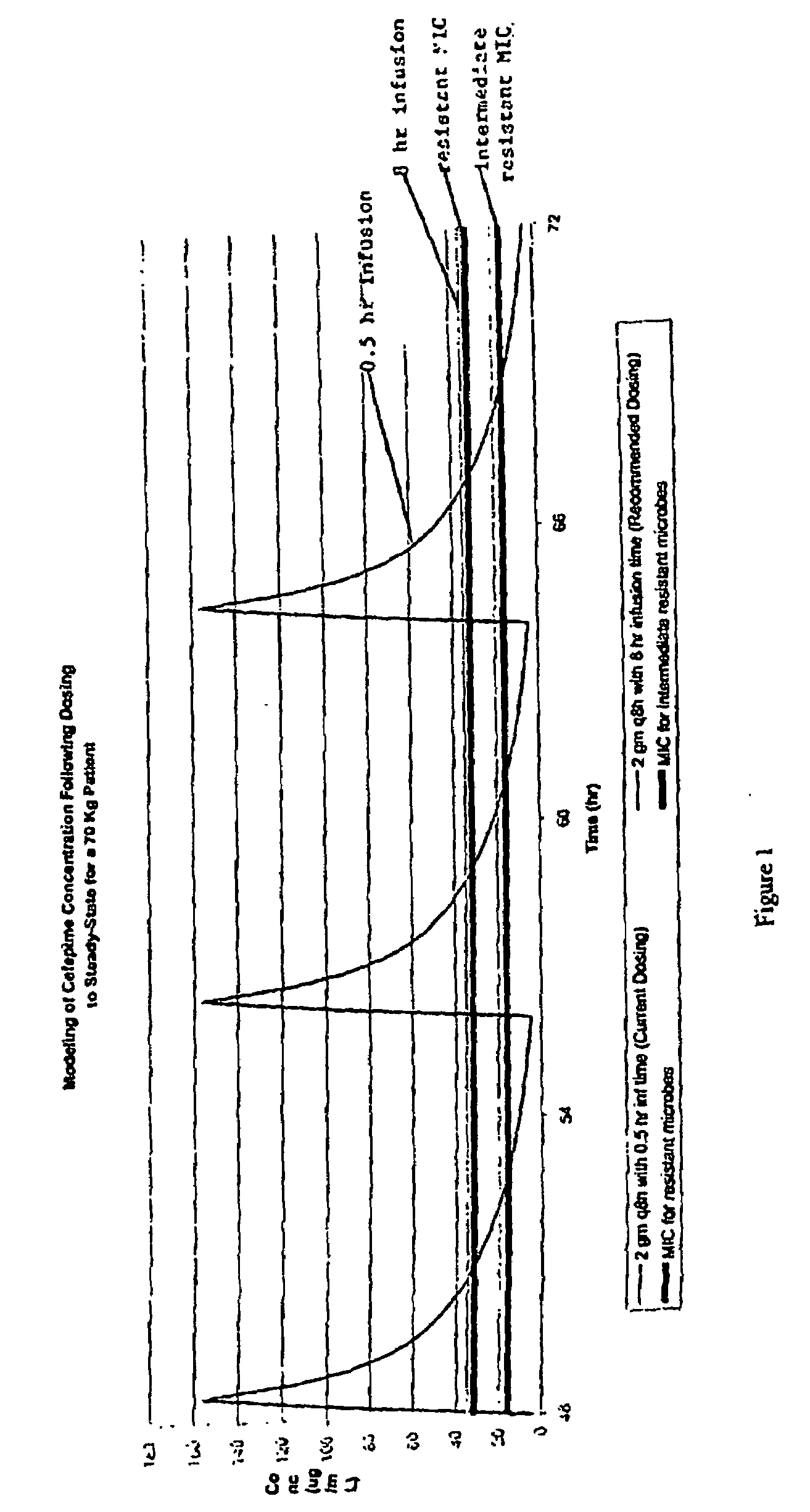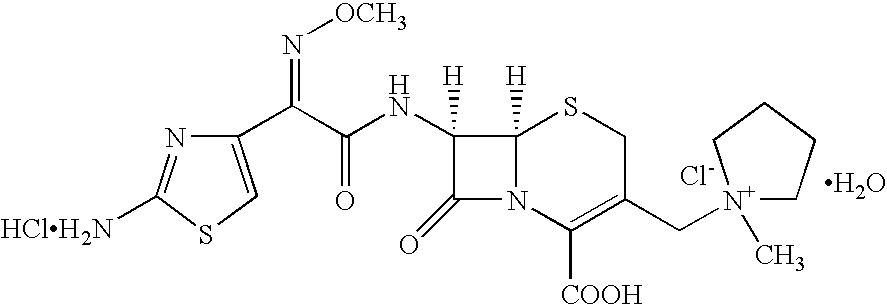Stable liquid formulations of Anti-infective agents and adjusted Anti-infective agent dosing regimens
a technology of anti-infective agents and liquid formulations, which is applied in the direction of antibacterial agents, drug compositions, antiparasitic agents, etc., can solve the problems of bacteria with greater ability to survive, less ability, and drug resistan
- Summary
- Abstract
- Description
- Claims
- Application Information
AI Technical Summary
Benefits of technology
Problems solved by technology
Method used
Image
Examples
Embodiment Construction
[0026]For a better understanding of the instant invention, the following non-limiting definitions are provided:
[0027]As used herein an “infective organism” is a bacteria, mycobacteria, fungus, protist, or other parasite that infects a mammal.
[0028]An “anti-infective agent” is a chemical or biological entity that has the ability to kill an infective organism or to arrest or retard the growth and / or reproduction of the infective organism.
[0029]An anti-infective agent is administered by a “dosage regimen.” A dosage regimen includes both a dosage amount and a dosing interval. The dosing interval is the period of time between administration of a first dose and administration of the next dose. In the case of an. anti-infective agent that is administered by infusion, the dosing interval is the time between initiation of administration of a first dose and initiation of administration of the next dose. For example, if an agent is administered by infusion over one hour, with a twelve hour dos...
PUM
| Property | Measurement | Unit |
|---|---|---|
| time | aaaaa | aaaaa |
| time | aaaaa | aaaaa |
| time | aaaaa | aaaaa |
Abstract
Description
Claims
Application Information
 Login to View More
Login to View More - R&D
- Intellectual Property
- Life Sciences
- Materials
- Tech Scout
- Unparalleled Data Quality
- Higher Quality Content
- 60% Fewer Hallucinations
Browse by: Latest US Patents, China's latest patents, Technical Efficacy Thesaurus, Application Domain, Technology Topic, Popular Technical Reports.
© 2025 PatSnap. All rights reserved.Legal|Privacy policy|Modern Slavery Act Transparency Statement|Sitemap|About US| Contact US: help@patsnap.com



